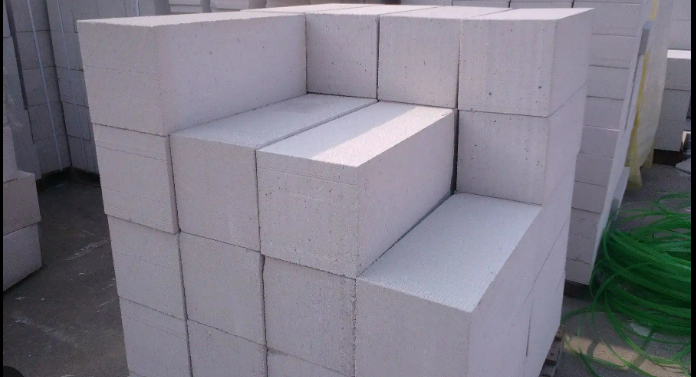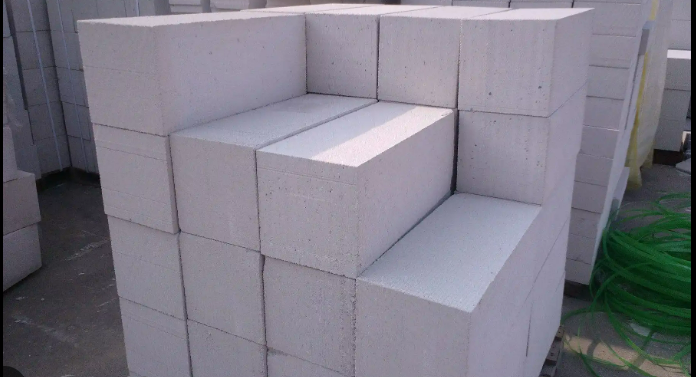Lightweight concrete has the same strength as conventional concrete but considerably lower weight. Recent advancements in lightweight concrete are making it more and more popular. Conventional concrete has a density of 2200 Kilograms per cubic meter to 2400 Kilograms per cubic meter.
In contrast, the density of lightweight concrete varies from 500 to 1700 kilograms per cubic meter depending on the constituents and method of production. The production of lightweight concrete is done by either of the following methods.
There are three methods of producing lightweight concrete. Namely, lightweight aggregate concrete, aerated or cellular concrete, and no-fines concrete.
No-Fines Concrete
As the name suggests, in this type of concrete there is no to little content of fine aggregate. This type of concrete is pervious and also architecturally attractive.
When conventional coarse aggregates are used in lightweight concrete, they show a density of 1500 to 1600 kilograms per cubic meter.
Lightweight Aggregate Concrete
This method employs the replacement of conventional high-density coarse aggregate with low-density aggregate.
There are two types of low-density aggregates, natural and artificial. Natural low-density aggregates used in lightweight concrete are pumice, rice husk, volcano cinder, and diatomite. While artificially developed low-weight aggregates foam slag, bloated clay, etc.
Low-density aggregates could also be made from pulverized fly ash, expanded clay, expanded shale, etc.
Chemical Aerating
Aerated concrete is made by introducing air or gas into a slurry composed of Portland cement or lime. Then, finely crushed siliceous fillers are added such that when the mix sets and hardens, a uniformly cellular structure is formed.
The numerous tiny air bubbles created drastically improve thermal and sound insulation.
Foaming Admixture
The method of preparing lightweight concrete with foaming admixtures comprises the addition of aluminum powder or hydrogen gas.
Properties of Lightweight Concrete
- Reduced Density: Lightweight concrete typically has a density ranging from 1,400 to 1,800 kg/m³, compared to the 2,400 kg/m³ of normal concrete.
- Insulation Properties: It offers excellent thermal and sound insulation, making it ideal for building applications where energy efficiency and noise reduction are important.
- High Strength-to-Weight Ratio: Despite its lower density, lightweight concrete maintains sufficient structural integrity, providing a good strength-to-weight ratio.
- Workability: It is easier to handle and transport due to its lower weight, which also reduces the labor and construction time.
- Lower Coefficient of Thermal Expansion: This helps in minimizing thermal stress within the concrete, enhancing its durability.
- Improved Fire Resistance: Due to its composition, lightweight concrete has better fire resistance properties than conventional concrete.
- Cost Efficiency: Although the initial material cost may be higher, the reduced weight can lead to savings in transportation, labor, and structural support costs.
Benefits of Lightweight Concrete
-
As this type of concrete has a density even below 700 Kilograms per cubic meter it imparts a much lesser load on the foundation of buildings.
-
Lightweight concrete blocks are used in the construction of walls instead of bricks which has several advantages. Like much better fire resistance, and improved compressive strength.
-
A new generation of AAC blocks also called Autoclaved Aerated Concrete blocks are being used in almost every building where it is possible to use.
-
AAC blocks also have higher resistance against penetration of dampness.
-
As AAC blocks are lighter in weight it is easier for construction labor to work with.
-
Apart from AAC blocks, lightweight concrete is also used in slabs and terrace roof.
-
Birla Aercon is one of the leading manufacturer of AAC blocks in India.
Applications of Lightweight Concrete
Lightweight concrete is used in a variety of applications due to its beneficial properties. Here are some common applications:
- Building Construction: Used for constructing walls, floors, and roofs, especially in multi-story buildings to reduce the overall load on the structure.
- Bridge Decks: Employed in the construction of bridge decks to decrease the dead load, leading to reduced material costs for the supporting structure.
- Marine Structures: Ideal for floating structures, such as pontoons and barges, because of its buoyancy.
- Sound Barriers: Used in highway sound barriers due to its sound insulation properties.
- Insulating Concrete: Utilized in areas where thermal insulation is required, such as roofs and walls.
- Precast Concrete Elements: Commonly used in the production of precast concrete elements like panels, blocks, and architectural facades.
- Fill Material: Employed as a lightweight fill for roads, embankments, and retaining walls to reduce the pressure on underlying soils and foundations.
- Fireproofing: Used in the fireproofing of steel structures due to its high fire resistance.
Also Read – Properties of Fresh Concrete – Segregation And Bleeding
What Is RCC? Properties and Uses Of RCC
Grades of Concrete and Mix Ratio for Nominal Mix Concrete
Factors Affecting Durability of Concrete: Engineering Perspective
Factors Affecting the Strength of Concrete – Concrete Technology
FAQs
The three different types are lightweight aggregate concrete, cellular or aerated concrete, and no-fines concrete.
AAC stands for Autoclaved Aerated Concrete blocks. It is a form of lightweight concrete.
AAC blocks are weighing at 650 KiloGrams per cubic Meter.
